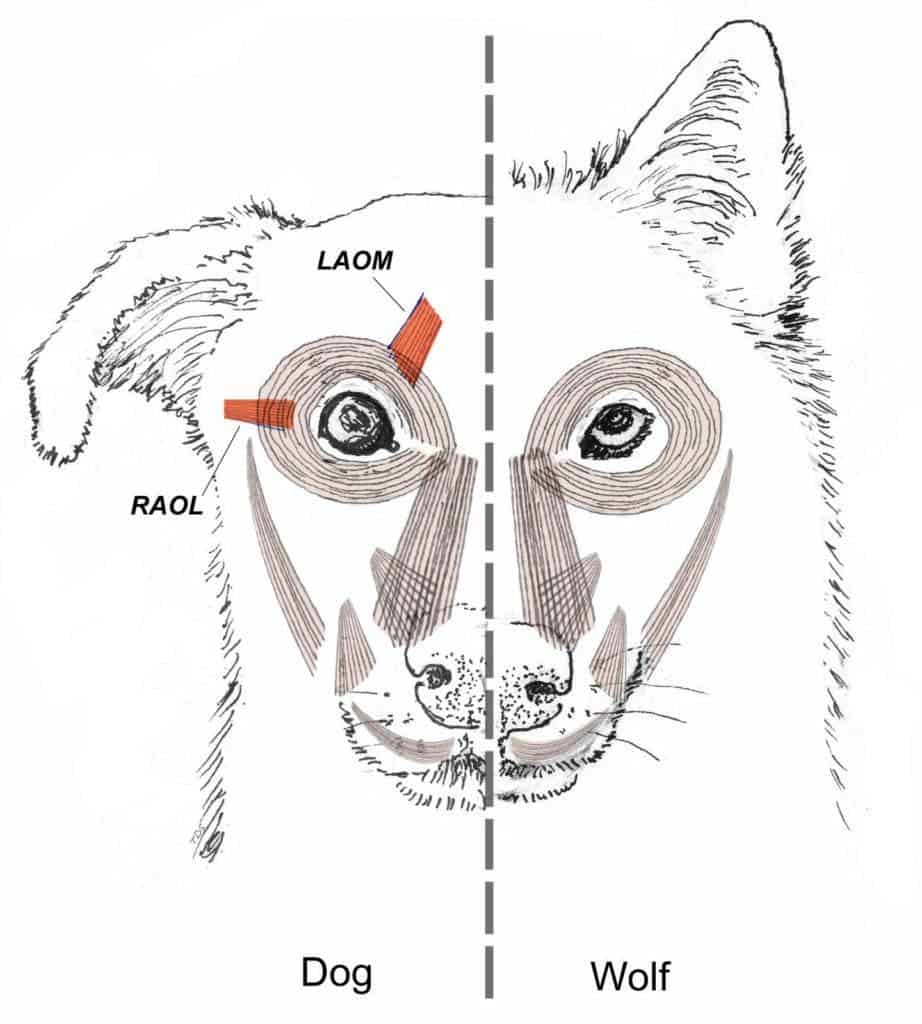
When a dog needs something from its human, it needs only to raise its eyebrows. Faced with those big “puppy dog eyes”, the human has little choice but to yield. This canine trait and the power it has in human-dog dynamics is, of course, no accident. According to a new study, dogs have evolved muscles around the eyes that allow them to be more expressive; muscles which wolves, dogs’ closest living relatives, lack.
Researchers at Howard University compared the facial anatomies of six domestic dogs and four gray wolves, along with behavioral changes in nine wolves and 27 shelter dogs. The researchers discovered that all the dogs had a muscle that pulls the lateral corner of the eyelid toward the ears when contracted. This very thin muscle, called the levator anguli oculi medialis, doesn’t exist in wolves, which can only mean that it appeared as a byproduct of canine domestication. It happened relatively fast too, over tens of thousands of years.
“We show that, in only 33,000 y, domestication transformed the facial muscle anatomy of dogs specifically for facial communication with humans. Based on dissections of dog and wolf heads, we show that the levator anguli oculi medialis, a muscle responsible for raising the inner eyebrow intensely, is uniformly present in dogs but not in wolves,” the authors wrote in the journal PNAS.
In order to study how dogs use their extra eye muscle, the researchers exposed the participating canines to humans for a couple of minutes. Compared to wolves, the dogs raised their inner eyebrows more frequently and with greater intensity than wolves.

The extra muscle allows dogs to be more expressive, and the researchers believe that it appeared as a result of human preference for traits that facilitate eye contact between dogs and humans. In time, dogs that were more emotionally expressive were selected by humans and bred more often than less expressive dogs.
“We know that humans favor dogs that show paedomorphic (infant-like) anatomical features like a large forehead, large eyes, and so on; in studies asking people to select pictures presenting dog (or cat) faces, people prefer the faces that present paedomorphic features over others,” the authors said.
Video: eye muscle intensity in wolves.
Video: eye muscle intensity in shelter dog.
Studies have shown that when a dog makes “puppy dog eyes”, humans are more likely to desire to look after them. Shelter dogs who widen their eyes and raise their eyebrows more often are also more likely to be adopted compared to dogs that are less expressive. In other words, we’ve manipulated dogs to the point that they evolved features to our liking. But, the tables have since turned. It is now dogs who manipulate us instead, with their irresistible adorable eyes.






